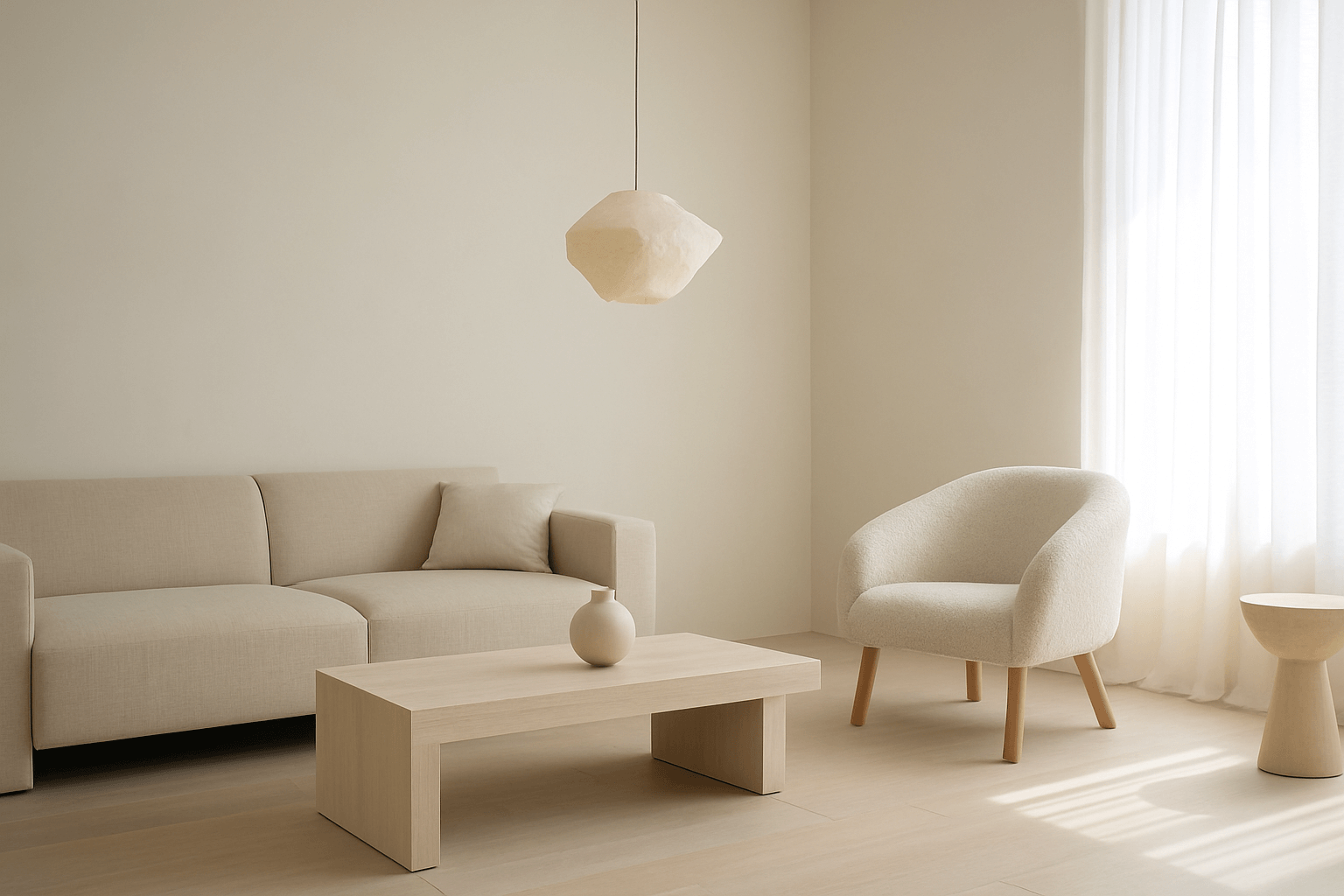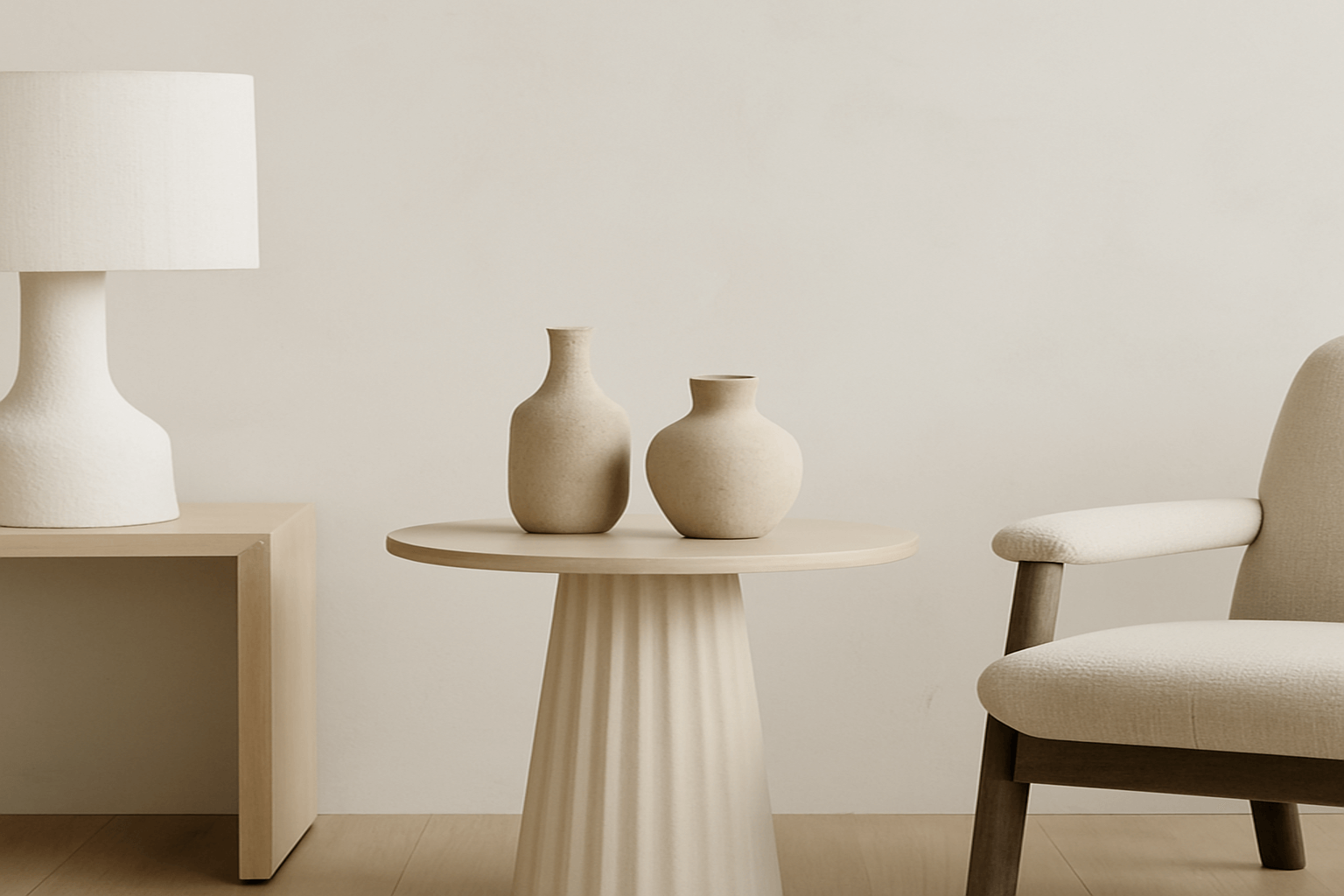What Is Quiet Contrast?
In minimalist design, contrast doesn’t have to be loud. You don’t need bright colors or bold patterns to create interest.
Quiet contrast is the subtle interplay of texture, tone, and form. It’s how soft meets structured, matte meets gloss, and warm meets cool—gently, without chaos.
This approach adds depth while preserving the clarity and stillness that minimalism is known for.
Why Contrast Still Matters in Minimalist Spaces
-
Adds interest without clutter
-
Helps define zones in open layouts
-
Enhances emotional warmth through variety
-
Keeps a neutral palette from feeling flat
Too much uniformity can feel sterile. Quiet contrast brings life.
How to Use Quiet Contrast in Your Home
1. Layer Tones Within One Color Family
Think ivory, stone, beige, and sand rather than pure white. Use different shades in walls, textiles, and ceramics to build subtle richness.
2. Pair Soft Textures With Solid Forms
A linen chair next to a concrete side table. A wool throw on a low oak bench. Contrast emerges through feel and structure—not color.
3. Use Material Finish to Create Light Play
Mix matte and polished surfaces. A matte clay vase against a glossy shelf. A natural wood frame next to a plaster wall. These contrasts catch and shape light in beautiful, quiet ways.
4. Introduce One Unexpected Form
Break up flatness with a rounded lamp, an asymmetrical mirror, or an irregular handmade bowl. This organic contrast brings warmth and humanity.
5. Let Shadow Be the Contrast
Play with natural light. Use sheer curtains and empty space to let shadows fall and shift. The most powerful contrast often comes from what isn’t added.
Final Thoughts
Minimalist design doesn’t mean monotone. It means intentional simplicity—and quiet contrast is one of the most powerful tools for achieving it.
It lets a space breathe while keeping it visually engaging. It makes rooms feel lived-in, not styled. And most importantly, it lets your home feel calm without becoming cold.
















